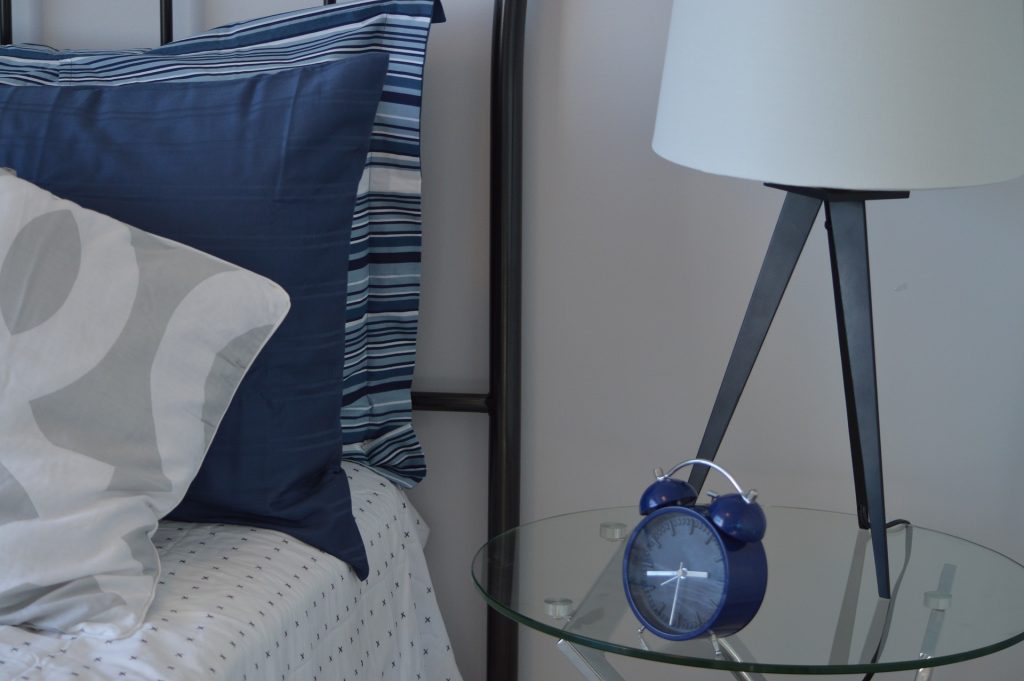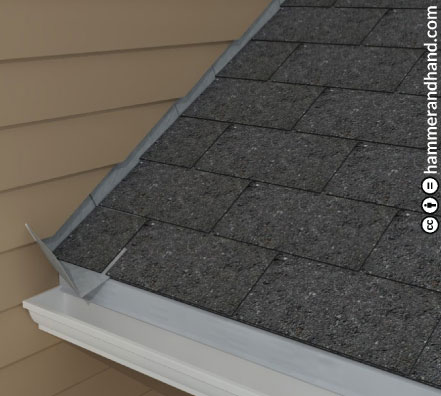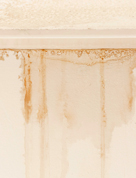 My wife and I just bought a new home. And while everything ended well, the process of searching was not without its fair share of stress. However, despite all that, I discovered that touring many different homes and asking questions like “can we live here” was also very interesting and very eye-opening to me.
My wife and I just bought a new home. And while everything ended well, the process of searching was not without its fair share of stress. However, despite all that, I discovered that touring many different homes and asking questions like “can we live here” was also very interesting and very eye-opening to me.
See, usually, I think and talk about paint and colors and decorating from the perspective of a homeowner who plans on staying in his or her home indefinitely. I generally talk about the importance of decorating with color, about putting your personality into your choices and all that. However, as I toured many of these homes, looking for one to purchase and move my family into, I kept thinking–over and over–how I wished the sellers had potentially put just a little bit less of themselves and their personality into the paint jobs.
As I said earlier, it was a bit of an eye-opener for me–and something that I failed to do myself in my own home–but it made me realize that when it comes to selling your home, neutral beats color almost every time. Here are just a few reasons:
1. Color Often Requires a Repaint
Neutrals never do. Bold, interesting color schemes built around your furniture and decor are tremendously effective ways to infuse a home with life and personality. And if you’re staying there, that’s great. However, if you’re selling your home think about it: the colors are built around your furniture and your personality. New buyers look at them and think: “Wow, almost everything here will need to be repainted before we can put our stuff in here.”
Neutral colors, on the other hand, may not pop with personality or excitement, but neither do they leave a prospective buyer thinking “repaint, repaint, repaint” as she walks from room to room to room.
On the other hand, touring homes with neutral colors, I found myself saying: “We could put some color in this room down the line, but,” (and here’s the money-line), “but, we can move in with it just like it is.”
Repainting a room, in reality, is not a big project, but that doesn’t stop many people from thinking of it has a huge undertaking. When you fill your “For Sale” home with color, many prospective buyers walk out with an idea that a lot of work and expense is required before the home will be ready for their stuff. When you paint with neutrals, the home is move-in ready.
2. Color Is Personal
Neutral, on the other hand, allows for multiple personalities (in a good way). Color reflects our personality, our moods. Colors on the wall of a room help to determine the atmosphere of that room–how we feel about it and how we feel in it. When you decorate your “For Sale” home in colors, you are setting the tone for a given space based on how you feel about it, on your personality.
Decorating in neutrals, however, gives the prospective buyers the complete freedom to customize that room to fit their family, their moods, their personality. Remember: when people go through your home, you want them to feel as if it could be theirs. When you’ve got your personal favorite color combinations spread thickly on every wall, it becomes a little harder for folks to picture themselves in your home. Neutrals on the walls allows the many folks with many different personalities who tour your home to each potentially picture it as theirs.
3. Colors On the Wall Present a Finished Work
Neutrals provide a blank canvas to work on. Don’t assume that neutral colors are boring and that using them means your home won’t have any appeal. You can still introduce color and flair to your decorating through the use of accessories. This is perfect because it shows that your home provides an interesting setting, full of color and life. However, prospective buyers immediately realize that when those items are removed, they’ve got a blank canvas to put their own mark on.
My wife and I saw this over and over. Certain homes we toured had neutral walls and colorful accessories–and while we maybe weren’t interested in the colors used, we spent many nights dreaming about how we could bring our colors into that home in accessories and furniture we bought, painted, or brought with us.
We weren’t thinking about the work of repainting rooms. We were thinking instead about moving in and buying new decor that would help us spread our colors and personality through the home should we buy it. There is a night-and-day difference between those two modes of thinking. If you, as a seller, have people leave your home after a walk-through dreaming about the new decor they can purchase or bring with them, you’re way ahead of the seller who’s prospective buyers leave wondering how much it’s going to cost to cover the lime green bathroom walls.
Of course, color works when selling homes. Of course, neutrals aren’t the only way to go. However, I bring up these points because I was struck over and over by the ease with which I could picture my family and I living in the homes that were largely neutral. Conversely, I was surprised how often we left the homes full of trendy colors and said things like “that house looked cool, but it definitely didn’t fit our personality.”
It’s color–it can be covered over. And I know that. Still, I found it hard to overcome the natural tendency to see someone else’s color scheme as theirs, not mine.
Bottom line? Think about it! If you’re selling your home and you’re repainting, why not opt for some neutral tones? It might help you get your house off the market quicker!
 Dave Stegink is in his 4th year doing inspections full time for ABI Inspection Services. For about 8 years prior to that, he inspected homes on a part time basis. Before joining ABI Inspection Services full-time, he was the Construction Director at Lakeshore Habitat for Humanity for 4 years and had his own remodeling company.
Dave Stegink is in his 4th year doing inspections full time for ABI Inspection Services. For about 8 years prior to that, he inspected homes on a part time basis. Before joining ABI Inspection Services full-time, he was the Construction Director at Lakeshore Habitat for Humanity for 4 years and had his own remodeling company. Kickout Flashing
Kickout Flashing Water stains on a ceiling are depressing! They look terrible and worse, they are proof positive that there's a bigger issue at work in our homes. Maybe it's a leaky roof, maybe a burst pipe, or maybe we get lucky and it's just overeager bathers! On top of that, many of us have painted over a water stain only to see it almost magically bleed back through our new coat of paint. They're definitely frustrating. But the good news is, they can be easy to deal with. You just need to know the right way to approach the project and the right products to use!
Water stains on a ceiling are depressing! They look terrible and worse, they are proof positive that there's a bigger issue at work in our homes. Maybe it's a leaky roof, maybe a burst pipe, or maybe we get lucky and it's just overeager bathers! On top of that, many of us have painted over a water stain only to see it almost magically bleed back through our new coat of paint. They're definitely frustrating. But the good news is, they can be easy to deal with. You just need to know the right way to approach the project and the right products to use! Selling your home isn't something most of us do on a regular basis. As a result, we don't always know the best ways to go about it. Personally, I'm always interested in what I should update and what's not worth the expense. Today, we're in the studio with realtor Roger Nyhuis from Keller Williams Lakeshore Holland Realty. He's a self-described "old guy" who made a career change after 45 years in commercial radio! But don't let his relative "youth" in the realty world fool you: Roger knows his stuff and has great information to help you if you're even remotely thinking about selling your home!
Selling your home isn't something most of us do on a regular basis. As a result, we don't always know the best ways to go about it. Personally, I'm always interested in what I should update and what's not worth the expense. Today, we're in the studio with realtor Roger Nyhuis from Keller Williams Lakeshore Holland Realty. He's a self-described "old guy" who made a career change after 45 years in commercial radio! But don't let his relative "youth" in the realty world fool you: Roger knows his stuff and has great information to help you if you're even remotely thinking about selling your home!



 My wife and I just bought a new home. And while everything ended well, the process of searching was not without its fair share of stress. However, despite all that, I discovered that touring many different homes and asking questions like “can we live here” was also very interesting and very eye-opening to me.
My wife and I just bought a new home. And while everything ended well, the process of searching was not without its fair share of stress. However, despite all that, I discovered that touring many different homes and asking questions like “can we live here” was also very interesting and very eye-opening to me.
 OK, last time, I mentioned something I called The Great Disassociation and how it’s such an important concept when it comes to selling a home. See, when we live in our homes for any length of time, what typically happens is that we become blinded to the condition of the home. They’re our homes. We see them everyday. And as a result, little things kind of slip by us.
OK, last time, I mentioned something I called The Great Disassociation and how it’s such an important concept when it comes to selling a home. See, when we live in our homes for any length of time, what typically happens is that we become blinded to the condition of the home. They’re our homes. We see them everyday. And as a result, little things kind of slip by us.
 OK, last time we talked about how important it is for your home to give a great first impression when you’re trying to sell it. You need to make sure the outside of the home is appealing from the road. You cannot rely on the quality of the interior. You can’t bank on the fact that the inside of the home is finished so amazingly that people will be flocking in to pile their offers up at your feet. Oh, you may be right–about the interior being amazing–but the hard truth is that if the package isn’t appealing . . . chances are nobody’s going to peer inside long enough to see what’s in there.
OK, last time we talked about how important it is for your home to give a great first impression when you’re trying to sell it. You need to make sure the outside of the home is appealing from the road. You cannot rely on the quality of the interior. You can’t bank on the fact that the inside of the home is finished so amazingly that people will be flocking in to pile their offers up at your feet. Oh, you may be right–about the interior being amazing–but the hard truth is that if the package isn’t appealing . . . chances are nobody’s going to peer inside long enough to see what’s in there.